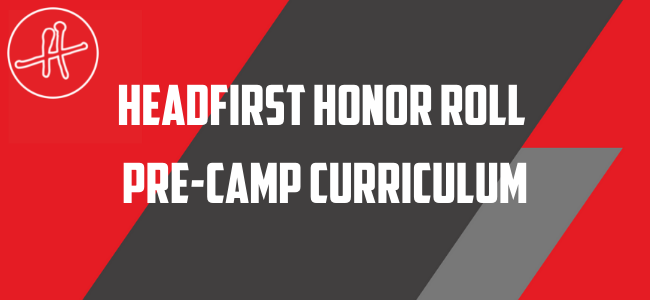


June 3, 2022
In Part 2 of the pre-camp curriculum (“How to Stand Out to College Coaches at Camp”) we touched on different ways in which players could get their names highlighted on a coach’s recruiting list – and one of the ways was by standing out on paper with your objective measurements. For Part 6 of the pre-camp curriculum, we’re going to dive in on how these objective measurements are used in recruiting, and how players can best prepare for them and use them to their advantage.
As mentioned in that earlier part of the pre-camp curriculum, coaches are assessing your projectability and your on-field tools as a player. Objective measurements like 60-yd. dash, overhand throwing velocity and batted ball velocity that we collect at camp can give coaches insight into your physical tools and output and give them another layer to evaluate how you’ll continue to develop as a player.
There are both coach-specific differences in how objective measurements are used, and also position-specific considerations – not every coach is going to look at or evaluate your data the same way, and different measurements may matter more or less depending on your position and what type of player you are on the field.
Your objective measurements aren’t the final statement on how good you are as a player – but they can help give coaches insight into your raw “tools” and output. For example: there’s no guarantee that if you run a 6.7s 60-yd. dash that you’re able to get good breaks on the ball in the outfield or that you’re the best baserunner – but it does show coaches that you have an impressive speed tool that may indicate potential future upside on the field.
You can think of your objective measurements almost like the SAT or ACT of your play: it’s a measure of your best output on a given day, but it doesn’t necessarily show your day-in, day-out contributions to a team or how your tools translate to live gameplay.
This is why at Honor Roll, these objectives are just a piece of the puzzle, and are combined with offensive and defensive showcases, data and analytics, live gameplay and more to give coaches full insight into your play – but putting some good objective measurements down is one way to draw coaches’ attention. If you’re able to spend some time and effort prior to camp working on “maxing out” one or two of the measurements that will be collected at camp, it can help put your best foot forward and get a closer look from the coaches in attendance.
It’s important to note that coaches use and value this data in different ways, and different programs may prioritize or look for different things. It’s also going to vary by position, as well – for example: if you’re an outfielder, then some coaches may place added weight to your 60 time and your overhand throwing velocity as a way to measure your potential defensive impact in covering ground in the outfield and holding runners with a strong arm. But different coaches also may value different objective measurements at the same position – while one coach may primarily be looking at batted ball velocity in recruiting first basemen (fitting the archetype of the power-hitting first baseman), another may look for overhand throwing velocity in recruiting first basemen, because the defensive impact of arm strength on bunt defenses and cuts to the plate from the outfield are important in their program.
Because of these differences, what’s important is identifying and emphasizing the strengths that you have as a player, rather than trying to fit a positional archetype that doesn’t fit how you play the game. Remember: the best way to stand out to coaches is to play YOUR game.
At each Honor Roll session, all players run through the following objective measurements during the Offensive and Defensive Showcase portions of camp:
All objective measurement data is collected by our Headfirst “red shirts”, and distributed to college coaches at the end of the showcase.
The most important part of your baseball-specific preparation for camp is your holistic development as a player – but putting in some dedicated reps with each of the objective measurements can help you put your best foot forward.
Now that you know what to expect, make sure that when Day 1 comes around, it’s not your first time ever running a 60-yd. dash, or collecting overhand throwing or batted ball velocity. Just simply collecting your own metrics like we will at camp will make you more comfortable when it matters most.
60-Yd. Dash:
Don’t just do all your speed work on a track. At camp you’ll run your 60 on-field, wearing your turf shoes or cleats – so put in a couple reps in that same way so that you’re used to it.
Overhand Throwing Velocity:
After you warm up and do some long toss during a practice session, test your overhand throwing velocity from 10-20 feet away throwing into a screen.
Batted Ball Velocity:
During or after a BP session, take some time to hit off a tee into a screen to collect your exit velocity. Take enough reps that you start to get comfortable and consistent in generating power off a tee. While it’s not productive to completely change your swing just for this, keep in mind that the purpose of your batted ball velocity at camp isn’t going gap-to-gap – it’s about the speed of the ball off the bat.
*For both overhand throwing velocity and batted ball velocity, it’s helpful to have access to a radar so that you’re able to track your own data – if you don’t have one, see if you’re able to borrow one from a coach or teammate, as this will help you set a baseline and track your development.
The other important aspect of preparing for your objective measurements at camp is zeroing in on the objective measurement(s) that highlight your strengths and putting in dedicated development time between now and camp. While this can be influenced by your position and the tools that are associated with it, it’s most useful to think about amplifying your strengths and highlighting the type of player that you are (remember from Part 2: play your game).
